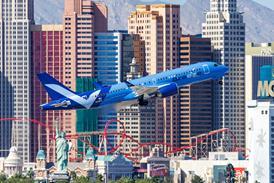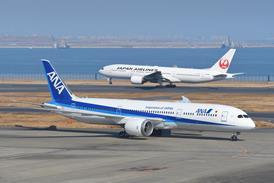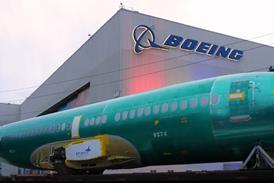DAVID LEARMOUNT / LONDON
General aviation accident statistics are slowly improving, but there remains a dramatic variation in standards between different areas
Two characteristics about general aviation (GA) safety are consistent in all the reporting countries. The first is that statistics show gradually reducing accident numbers and rates: the second is that traps that have always caught aviators off-guard are still the killers. There is also almost complete commonality from country to country in the most frequent accident causes.
In all the states that report improving GA safety levels, there are safety roadshows or fly-ins provided by the aviation authorities or by organisations such as the Aircraft Owners and Pilots Associations (AOPA). It is impossible to prove that this activity has a positive effect on safety - the organisers often say that, like speakers at a party political rally, they feel they are preaching to the converted. However, something is bringing the accident rates down, and most of the aircraft are the same ones as five years ago, albeit older.
In Australia, the total number of GA accidents fell from 257 in 1993 to 133 last year with a reassuring steadiness that makes it look as if there is something definite at work. It is one of the countries that has safety roadshows, operated by the Civil Aviation Safety Authority (CASA), and recently it ran a virtual fly-in on the internet so people could join a forum to discuss safety issues and concerns.
Improvements in agricultural aviation accident rates have been dramatic - halving since 1992 - while in the same period accidents in the charter/air-taxi market have been reduced by a third. Meanwhile, accident rates in the business/private sector and in the training sector are virtually unchanged. No-one has tried to explain why.
For accident analysis, Australia categorises business and private aviation in the same sector. The US definition of corporate or executive aviation is business aircraft flown by professional pilots. Business aviation, on the other hand, is defined as being carried out by non-professional pilots who are flying themselves on business in an aircraft which either they own or appears on their company's balance sheet. However, the safety rates of business fliers in the USA are much better than the GA average there, and slightly better than the air-taxi companies that employ commercial pilots.
The USA, as usual, has the largest GA market in which to study safety, and it remains the best researched. But it is not the only country that reports assiduously on GA accidents, analyses their causes and provides statistics.
In 2002 the UK, according to the Civil Aviation Authority's General Aviation Safety Information Leaflet (GASIL), recorded the lowest-ever number of fatal GA fixed-wing aviation accidents. There were only five, which has restored a slight downward trend in its figures after three relatively high accident years. US GA all-accident rates have fallen in 10 years from 9.03 per 100,000 flying hours to 6.56. In 1983 the rate was 10.67, so the rate reduction does not seem to be a matter of fate. The fatal accident rate reductions in US GA have shown similar progress
Struggling to improve
Corporate aviation safety in the USA hardly improved last year, compared with 2001, but as it has been safer than that of commercial airlines since 1993, according to data presented at the Flight Safety Foundation's (FSF) Corporate Aviation Safety Seminar this year, any further improvement would presumably be difficult.
The difference in corporate safety levels from those in the rest of GA is so huge that some argue it should not be categorised as GA, on the grounds that the sector would rather be compared with airline operations than be tarred with the same brush as the GA industry.
The FSF presentation used figures by Robert Breiling Associates, which prepares safety statistics for the National Business Aviation Association. These reveal that last year US corporate aviation flew 6.89 million hours (up from 6.51 million hours in 2001) and suffered eight accidents, two of them fatal. This makes the fatal accident rate for the corporate/executive market 0.029 per 100,000 flying hours in 2002.
The FSF seminar heard that the fatal accident rate for the business sector, at 0.342 per 100,000h, was 11 times the corporate aviation fatal accident risk level in 2002, but it compares well with the fatal accident rate of air-taxi companies.
Corporate aviation safety got off to a bad start last year with a fatal Bombardier Challenger 600 accident at Birmingham International airport in the UK on 4 January. The aircraft crashed immediately after take-off when the pilot lost control. The left wing dropped to 111° bank and the nose to 13° down at impact, despite the quick application of full opposite aileron and rudder and a high nose-up demand on the elevators.
The aircraft came to rest on its back, broken in two and burning. In its initial factual bulletin, the UK Air Accidents Investigation Branch (AAIB) reported that it had recovered full information from the solid-state flight data and cockpit voice recorders, and there was no indication of any aircraft or engine malfunction, crew performance miscalculation, nor any error in the aircraft configuration or the crew's handling during take-off. Weather and visibility were good with the wind 140° at 8kt (15km/h) for take-off on runway 15, the temperature -2°C, dew point -3°C.
The notable factor, according to the AAIB bulletin, appeared to be that although the aircraft was left in the open overnight in temperatures as low as -9°C, and both pilots separately appeared to have carried out a visual external icing check, there had been no call for de-icing. Airport-based witnesses reported to the AAIB that they had seen ice or frost on the Challenger, and the airport notes that although all other departures called for de-icing, the Challenger crew did not.
The Agco-owned aircraft had arrived with three passengers and two crew the previous day from West Palm Beach, Florida, USA, and was refuelled to full tanks on the morning of the planned departure for Bangor, Maine, USA, with the same passengers and crew. All on board died in the accident.
There were nine cases of fatal loss of control during flight last year among turbine-powered aircraft, according to the Airclaims World Airline Accident Survey. They have not yet been fully reported, but six were business operations, one corporate and two were air-taxi companies.
The most common factor appears to have been pilot disorientation. In two of the cases the pilots reported what they believed were flight instrument problems before the crash, but in the others the aircraft appeared to have gone out of control, with no pilot radio call indicating a problem. Whether the issue was pure disorientation because of loss of visual cues, or pilot distraction because something else went wrong, is unknown. Except in the military, it is rare for pilots to be taught limited-panel instrument flying - that is, flying instruments without the use of the artificial horizon.
Surprising
In April, the US AOPA's Air Safety Foundation (ASF) issued an in-depth analysis of US GA flight safety in its annual Nall report for 2001, searching out detailed trends and factors in US light aviation (aircraft weighing less than 12,500lb/5,700kg).
The overall summary was that the accident figures were the lowest ever. One surprising point discovered in the Nall report is that airline transport pilots flying light aircraft suffered more take-off and landing accidents than student pilots relative to each group's percentage of the pilot population. The ASF did not venture an explanation of this.
As always, the report found that "manoeuvring flight" - mostly "buzzing" objects or places on the ground - caused more pilot-related fatalities than any other category. But weather-related accidents featured higher as a rate, with scud-running to try to beat worsening visual flight rules (VFR) conditions carrying the highest risk level of all the fatal accident factors. Warning pilots against scud-running, ASF executive director Bruce Landsberg says: "The odds, if you crash, are awful."
The UK GASIL reports that last year three out of five fatal fixed-wing accidents occurred in marginal weather conditions; the other two consisted of a runway overrun and a failure to recover from a spinning exercise.
The ASF found pilot loss of control during take-off carried a much higher fatality risk - 20.5% - than the risk level in incidents involving loss of control during landing, which the ASF found to be 1%. Landsberg's advice to GA light aircraft pilots best sums up the areas that the ASF found caused most accidents: "Address the basics: carry enough fuel, don't stall or fly too close to the ground, remain VFR when not on an IFR [instrument flight rules] flight plan, and polish your take-off and landing skills."
Flying clubs
There does not appear to be a study that compares the safety rates of ordinary leisure owner/fliers with those that are subject to the disciplines of a well-managed flying club. Flight International asked Zahurul Islam, the chief flying instructor (CFI)of Redhill Flying Club in the UK's busy south-eastern airspace, what differences were observable.
Islam, a former Pakistan air force qualified flying instructor, says: "Pilots with their own aeroplanes look after them immaculately and do pre-flight checks with great care. They leave them immaculate at the end of flights. Pilots using club aircraft often leave them untidy and if something's broken they don't always tell us. They leave it for the next pilot to find out."
But there is a clear difference in decision-making when the weather is marginal VFR. Islam observes: "In marginal VFR, aircraft owners will usually go - they always push their luck a little bit. But many of them are very capable pilots."
But of course, he points out, in marginal VFR, club pilots will not be allowed to depart unless they are suitably rated. There are other club disciplines, apart from monitoring competency and currency levels, that the CFI applies at Redhill.
The rules state that any defects must be rectified before flight; pilots must not only be competent but confident with their radio telephony skills even before they fly their first solo; student pilots must have full tanks on departure for navigation exercises and head for home when tanks get to half full; and because Redhill is so hemmed in with high density controlled airspace, the CFI ensures all pilots can navigate competently to avoid it, all aircraft are transponder-equipped and the pilots squawk 7000 or an allocated code from just before take-off.
Source: Flight International























